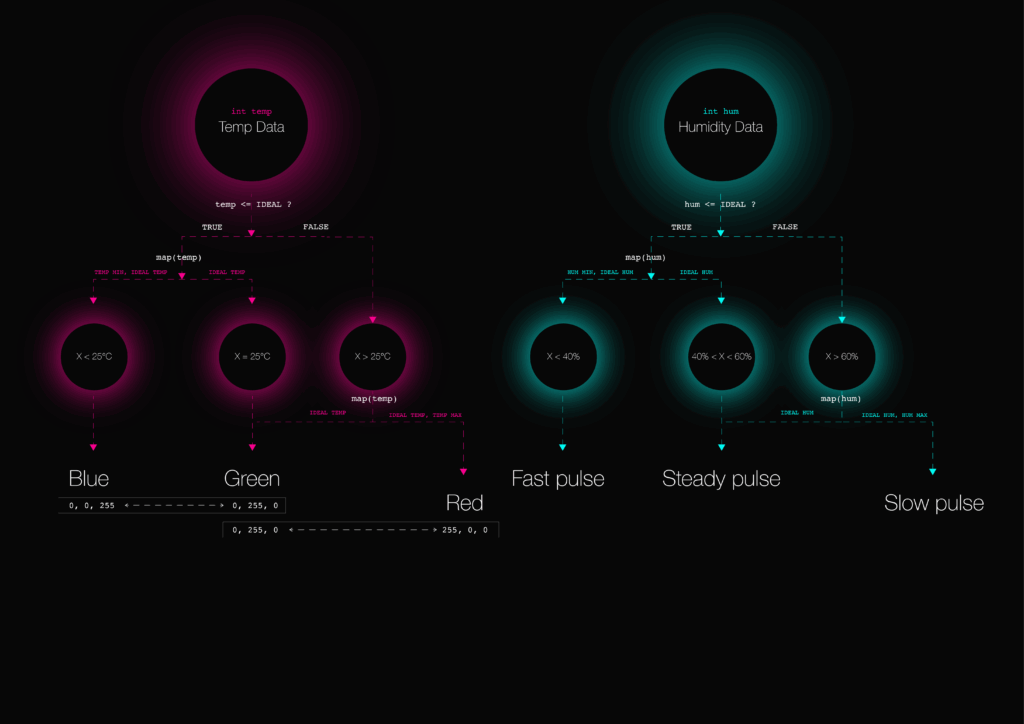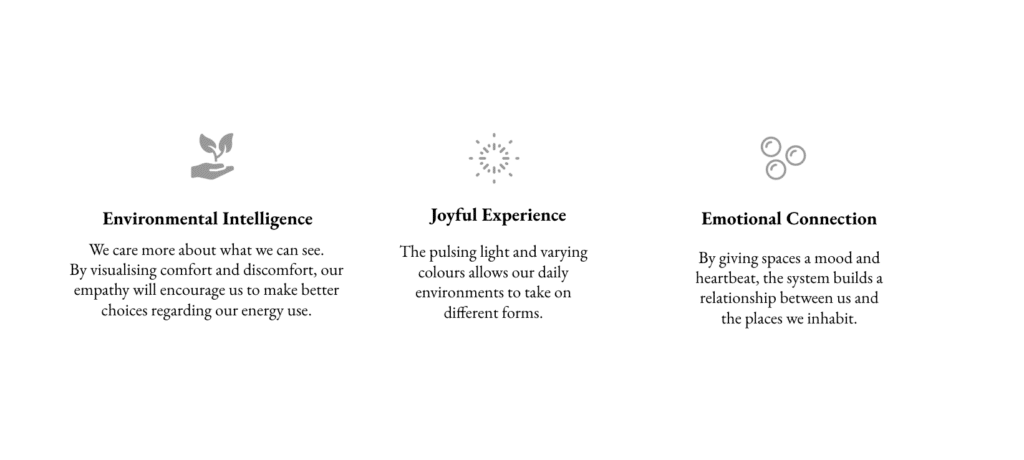Abstract
Environmental conditions are more often than not invisible and something that is felt rather than visually perceivable. The ClimaCode provides our spatial surroundings with their own language that enables them to better communicate with us as humans.
By translating climatic conditions, such as temperature and humidity, into light, the device communicates its climatic ‘mood’ with a calm, pulsing glow that mirrors a heartbeat. Thus, expressing bio-climatic changes in a subtle, human way for people to understand; enabling us to connect with our spaces on a more empathic level.
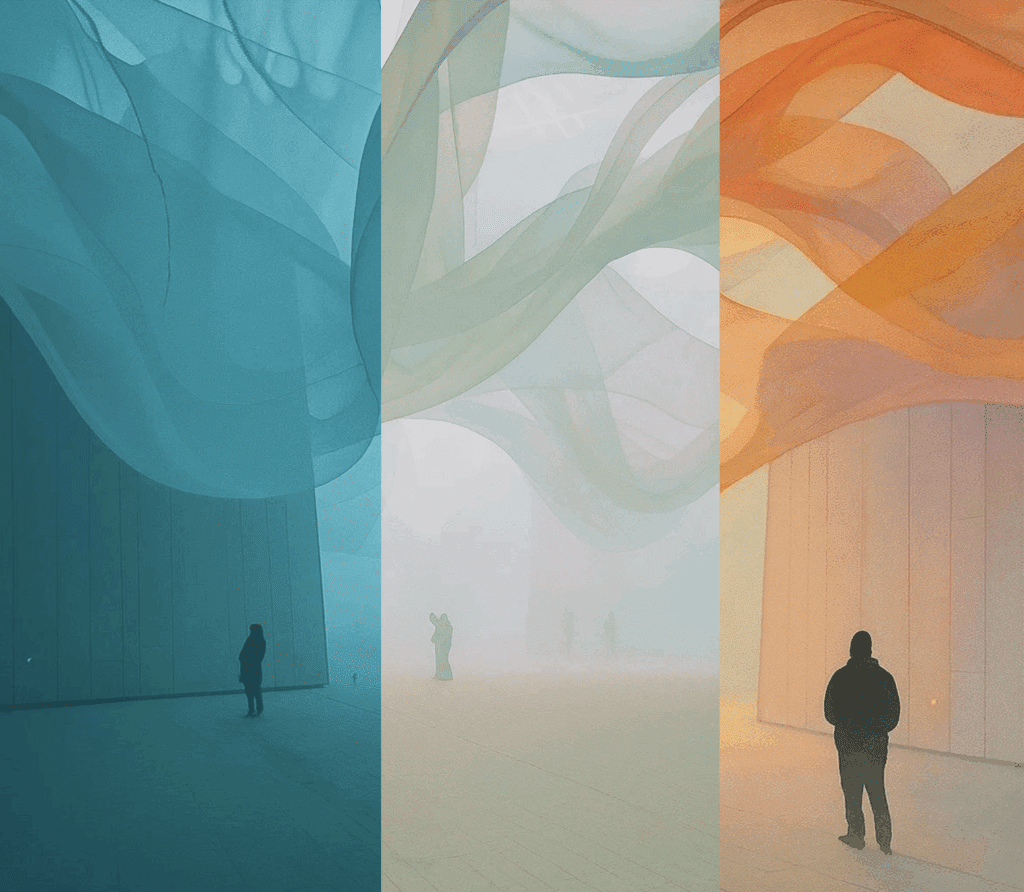
Concept
When a sensor reads temperature and humidity in real time, the ClimaColour Code converts that data into colour and a pulse behaviour in light. The system logic follows human intuition that creates outputs based on visual cues we associate with certain conditions to show its ‘mood’.
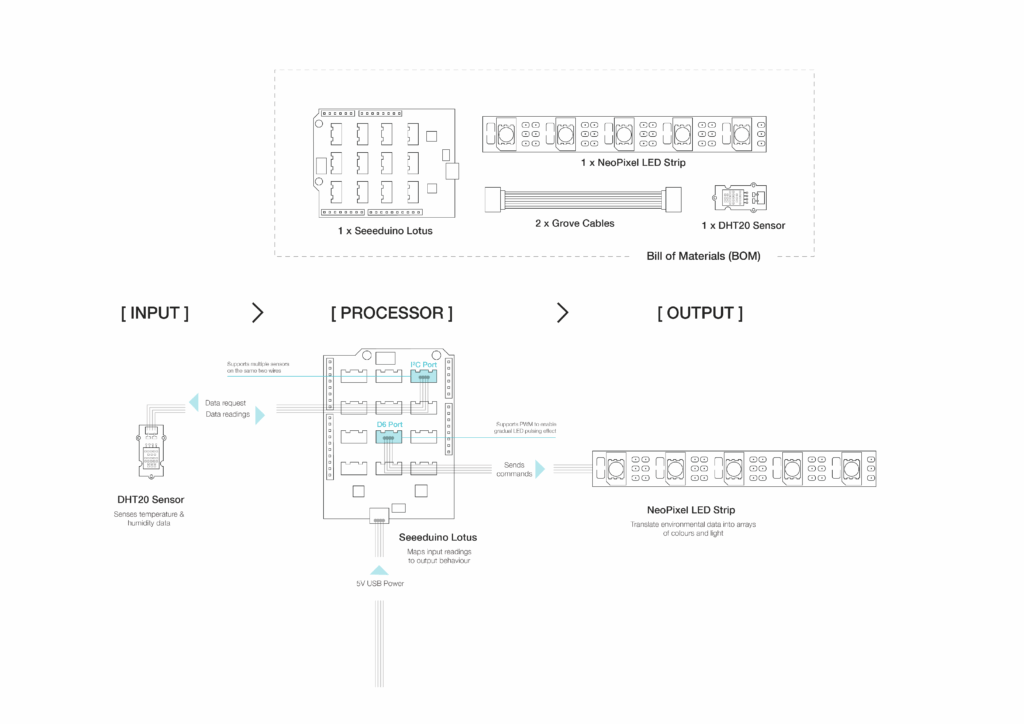
System Schematic: Input → Processing → Output
Input: Environmental Data
A DHT20 Temperature & Humidity Sensor continuously reads climate conditions in real time.
- Measures temperature (°C)
- Measures relative humidity (%)
- Sends both as digital data
Processing: Microcontroller Logic
A SeeedStudio Processer receives the sensor data and interprets it using a behavioural matrix.
- The light is programmed to constantly fade in fade out using a PWM
- Regardless of the conditions, there is a pulse that can be read as a heartbeat or a pulse, making you feel as though your surroundings are alive
map()functions convert temperature into colour- Conditional logic adjusts pulse speed and brightness
- This step translates data into emotional behaviour
Output: Expressive Ambient Light
A NeoPixel LED strip acts as the visual communicator.
- Colour shows temperature (blue/green/red scale)
- Pulse rhythm changes with humidity
- Brightness adapts to environmental stress
Real-time sensor reading → code decision → heartbeat light output
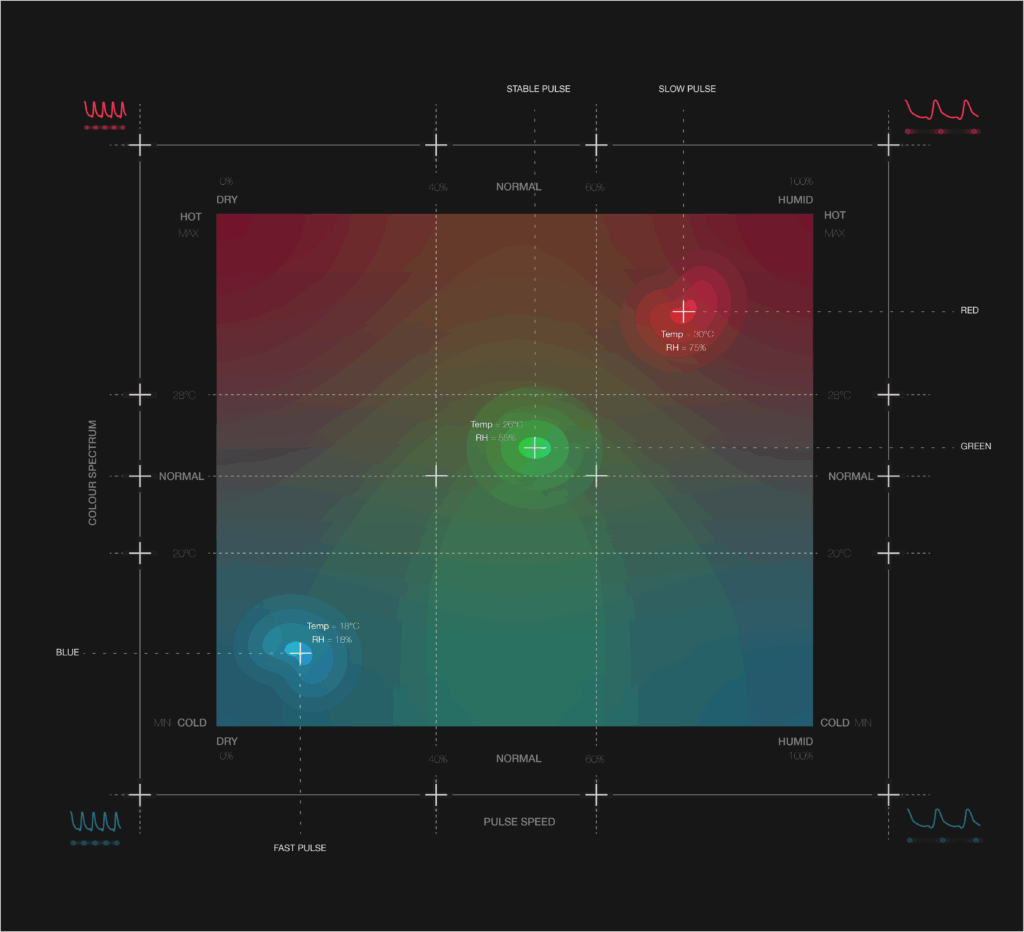
Behavioural Matrix
The Behavioural Matrix translates the environmental data into light conditions based on human mood logic. Each climatic condition is expressed as a combination of colour, pulse rhythm, and brightness that aligns with the emotional responses of the human body.
- Cold — translated as cool colours and faster pulses.
- Hot — expressed through warm colours and slower pulses.
- Low Humidity — faster, urgent pulses with lower brightness, reflecting dryness and thirst.
- High Humidity — represented as slow, deeper pulses with higher brightness showing fatigue and heaviness.
When the conditions are stable, the light settles into a steady green heartbeat.
This logic mirrors the biological cues we as humans innately understand. By grounding the visual system in emotional intelligence, this evokes empathy within us, making us more prone to addressing how our actions impact our spaces.
